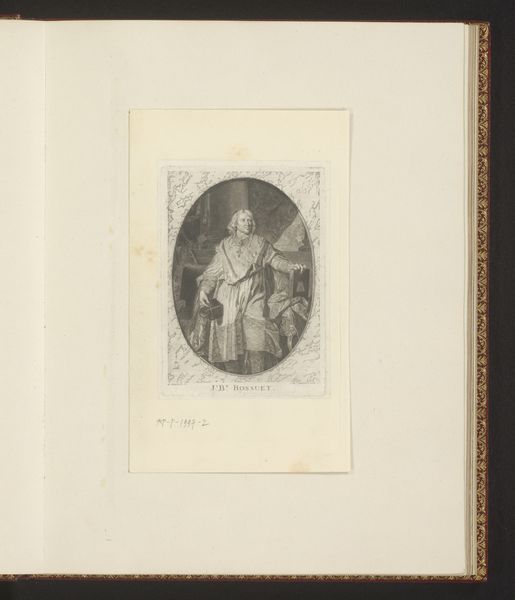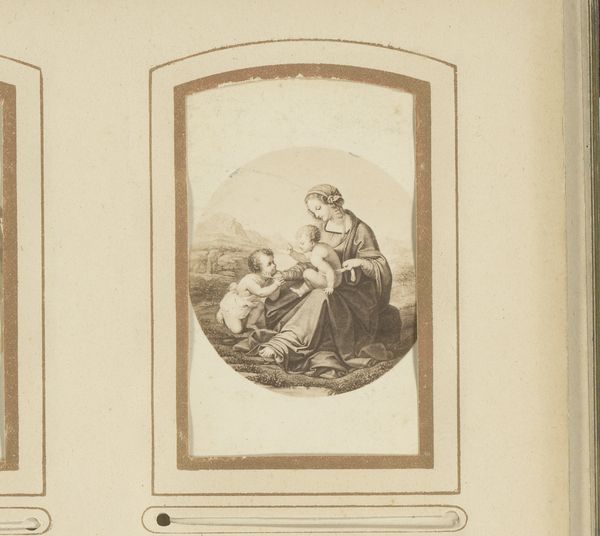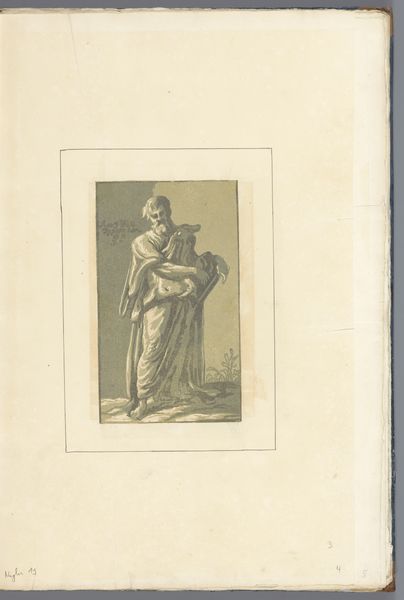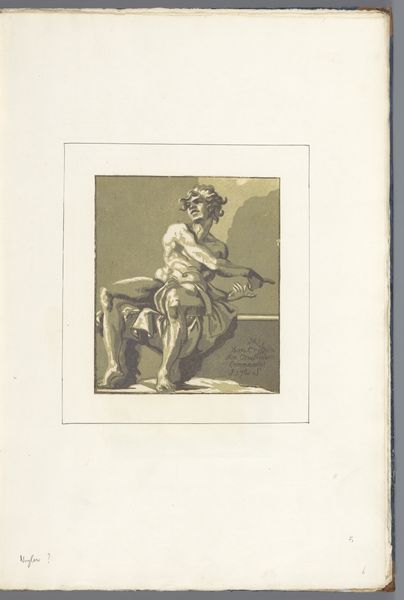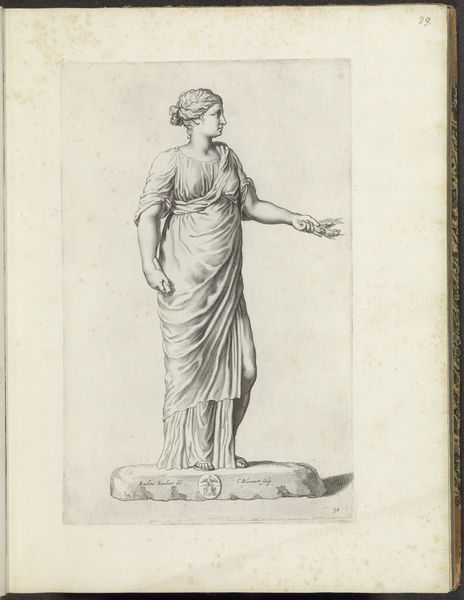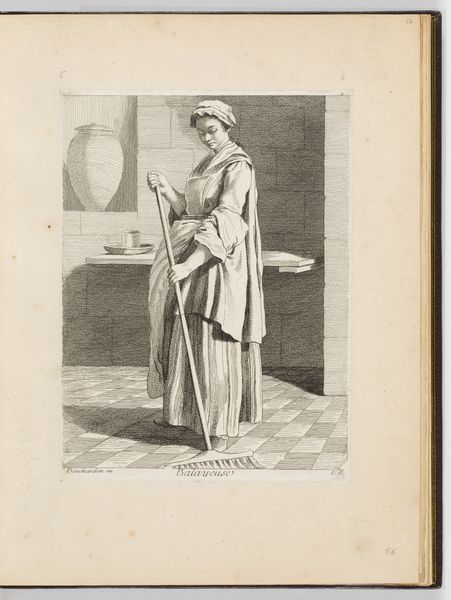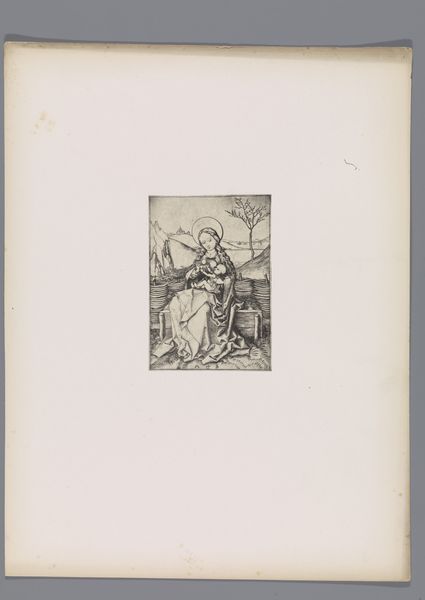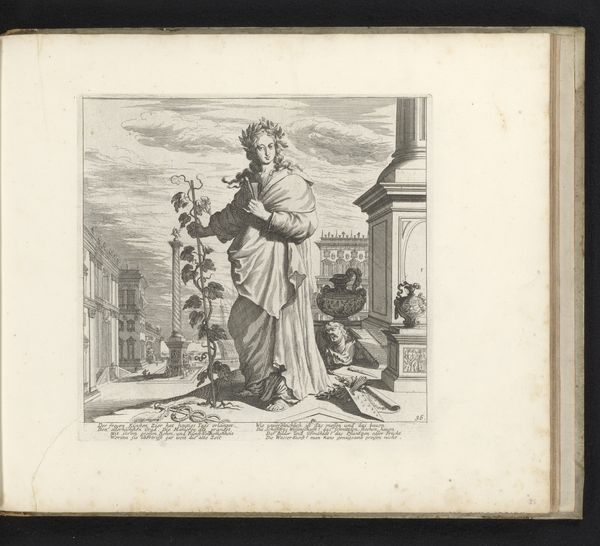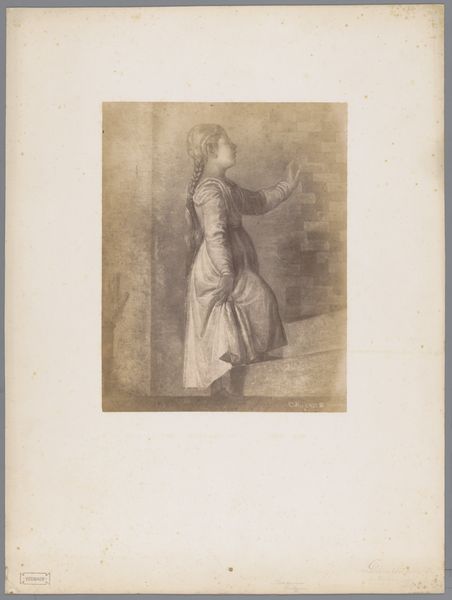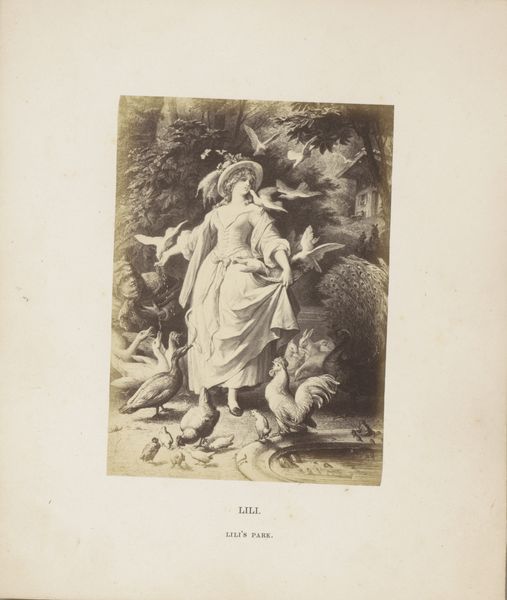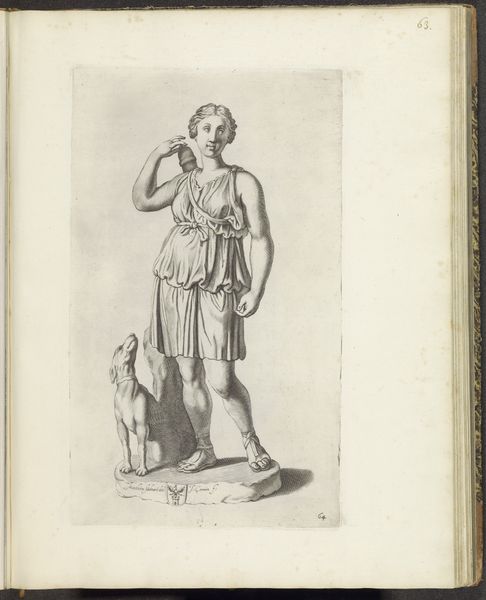
drawing, coloured-pencil, paper
#
portrait
#
drawing
#
neoclacissism
#
coloured-pencil
#
figuration
#
paper
#
coloured pencil
#
watercolour illustration
#
history-painting
Dimensions: height 192 mm, width 116 mm
Copyright: Rijks Museum: Open Domain
Editor: We're looking at "Johannes de Evangelist met kelk" from 1782 by John B. Skippe, a drawing made with colored pencils on paper. It strikes me as a somewhat understated image, a sort of monochrome snapshot from antiquity. What can you tell us about it? Curator: This piece speaks volumes about 18th-century artistic production and consumption. Skippe's choice of colored pencils, considered a craft material, elevates the medium to history-painting, typically reserved for oils. The image suggests that a challenge to hierarchies existed, in the late eighteenth century, between what’s considered fine art and everyday artistic making and labor. Why elevate coloured pencil in this manner, instead of relying on traditional techniques for classical subject matters? Editor: So you're saying the *materials* themselves are significant, rather than just the classical style or religious theme? Curator: Exactly. It prompts us to ask: who was consuming art made from such accessible, available materials? Was it made available and consumed within new artistic or educational settings? This work signals shifts in artistic training and distribution happening outside of the formal French salons and academies in this period. Look at how carefully the image is rendered too—it implies precision and patience on the part of the artist to reach a large and diverse market. What message do you think that sends about how this era and style functioned differently in other nations beyond France? Editor: It suggests perhaps, wider artistic engagement with historical subject matter beyond the elite circles usually associated with Neoclassicism. Curator: Precisely! This drawing exemplifies how the means of art production could challenge existing artistic structures. Skippe’s choice suggests an evolving art world with potentially different economies. Editor: I never thought about it that way; now I realize it’s more than just a pretty drawing. Curator: Indeed, the material itself can tell us a story, offering a fascinating insight into cultural shifts.
Comments
No comments
Be the first to comment and join the conversation on the ultimate creative platform.


